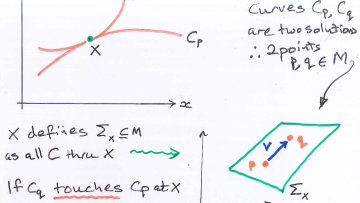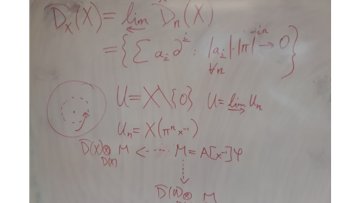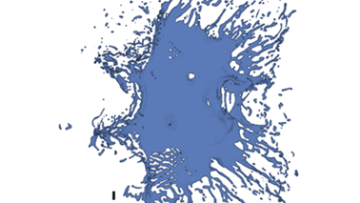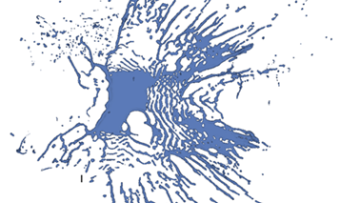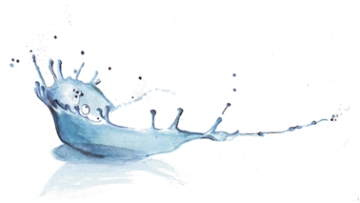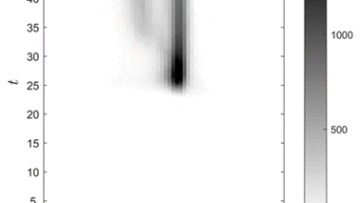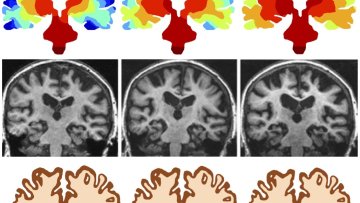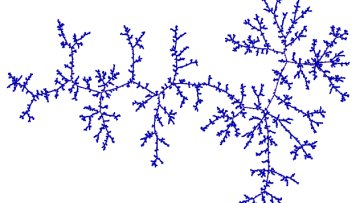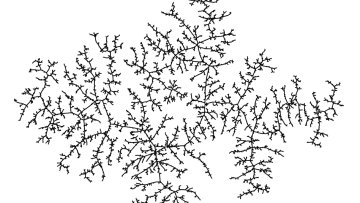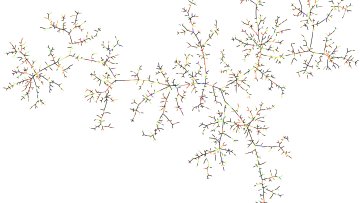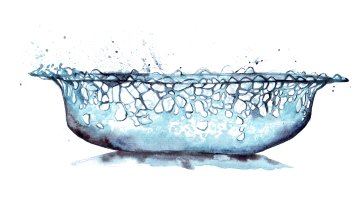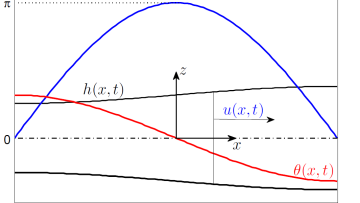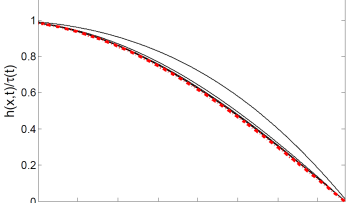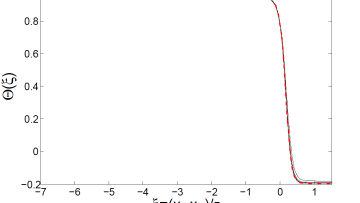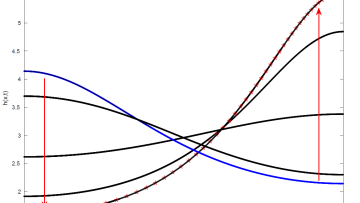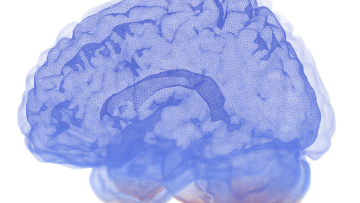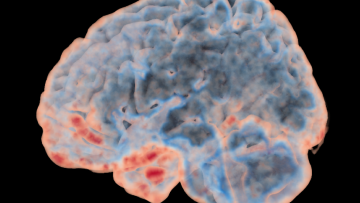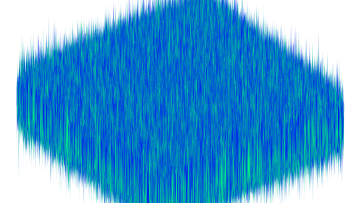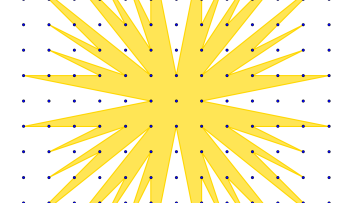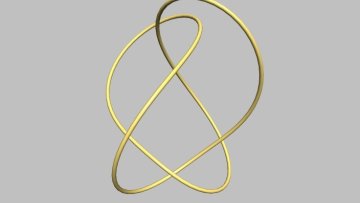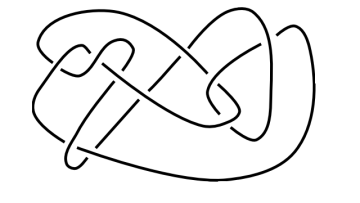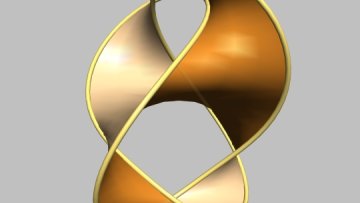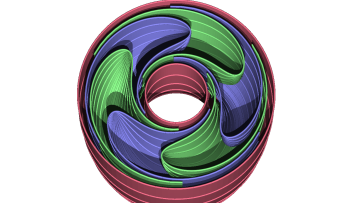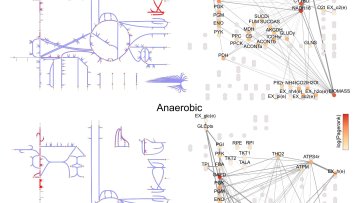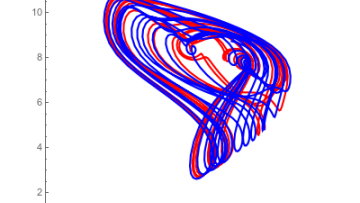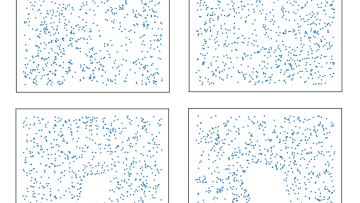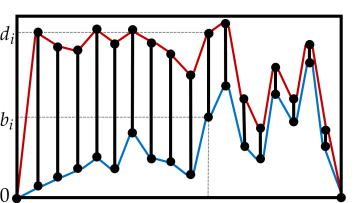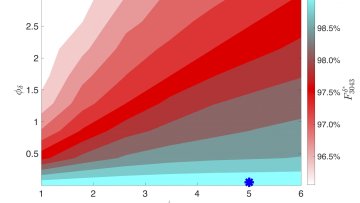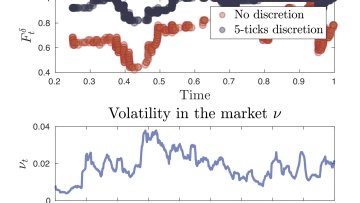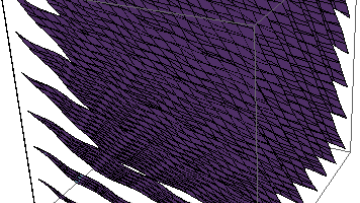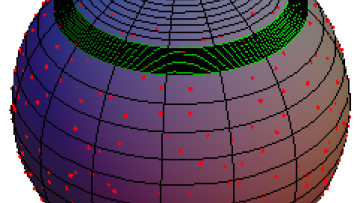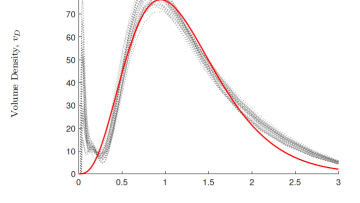If you type fundamental anagram of calculus into Google you will be led eventually to the string of symbols 6accdæ13eff7i3l9n4o4qrr4s8t12ux, probably accompanied by an explanation more or less as follows: this is a recipe for an anagram - take six copies of a, two of c, one of d, one of æ and so on, then rearrange these letters into a chunk of Latin.
Fusion energy may hold the key to a sustainable future of electricity production. However some technical stumbling blocks remain to be overcome. One central challenge of the fusion enterprise is how to effectively withstand the high heat load emanating from the core plasma. Even the sturdiest solid solutions suffer damage over time, which could be avoided by adding a thin liquid coating.
Oxford Mathematician Andreas Bode talks about his work in representation theory and its lesson for the interconnectness of mathematics.
Oxford Mathematician Elena Gal talks about her recently published research.
As you settle into your seat for a flight to a holiday destination or as part of yet another business trip, it is very easy to become absorbed by the glossy magazines or the novel you've been waiting forever to start reading. Understandably, the phrase "safety features on board this aircraft" triggers a rather unenthusiastic response. But you may be surprised by some of the incredible technology just a few feet away that is there to make sure everything goes smoothly.
Neurodegenerative diseases such as Alzheimer’s or Parkinson’s are devastating conditions with poorly understood mechanisms and no known cure. Yet a striking feature of these conditions is the characteristic pattern of invasion throughout the brain, leading to well-codified disease stages visible to neuropathology and associated with various cognitive deficits and pathologies.
Christina Goldschmidt from the Department of Statistics in Oxford talks about her joint work with Louigi Addario-Berry (McGill), Nicolas Broutin (Paris Sorbonne University) and Gregory Miermont (ENS Lyon) on random minimum spanning trees.
Oxford Mathematician Siddharth Arora talks about his and his colleagues' research in to using smartphone technology to anticipate the symptoms of Parkinson’s disease.
Free suspended liquid films or sheets are often formed during industrial production of sprays as well as in natural processes such as sea spray. Early experimental and theoretical investigations of them were done by French physicist Felix Savart, who observed liquid sheets forming by a jet impact on a solid surface, or by two jets impacting each other (1833), and British physicist Arthur Mason Worthington, a pioneer in investigation of the crown splash forming after impact of a drop onto a liquid surface.
Over the last few years, the study of the physiological mechanisms governing the movement of fluids in the brain (referred to as the brain waterscape) has gained prominence. The reason? Anomalies in the brain fluid dynamics are related to diseases such as Alzheimer's disease, other forms of dementia and hydrocephalus. Understanding how the brain waterscape works can help discover how these diseases develop. Unfortunately, experimenting with the human brain in vivo is extremely difficult and the subject is still poorly understood.
Oxford Mathematician Kristian Kiradjiev has won the Graham Hoare Prize (awarded by the Institute of Mathematics and its Applications) for his article "Connecting the Dots with Pick's Theorem". The Graham Hoare Prize is awarded annually to Early Career Mathematicians for a brilliant Mathematics Today article. Kristian also won the award in 2017. Here he talks about his work.
Oxford Mathematician Mehdi Yazdi talks about his study of tangled ropes in 3-dimensional space.
In many natural systems, such as the climate, the flow of fluids, but also in the motion of certain celestial objects, we observe complicated, irregular, seemingly random behaviours. These are often created by simple deterministic rules, and not by some vast complexity of the system or its inherent randomness. A typical feature of such chaotic systems is the high sensitivity of trajectories to the initial condition, which is also known in popular culture as the butterfly effect.
Oxford Mathematician Vidit Nanda talks about his and colleagues Harald Oberhauser and Ilya Chevyrev's recent work combining algebraic topology and stochastic analysis for statistical inference from complex nonlinear datasets.
"It is not difficult to generate very complicated dynamics via very simple equations. Consider, for each parameter r > 0 and natural number n, the update rules
Oxford Mathematicians Álvaro Cartea and Leandro Sánchez-Betancourt talk about their work on employing stochastic optimal control techniques to mitigate the effects of the time delay when receiving information in the marketplace and the time delay when sending instructions to buy or sell financial instruments on electronic exchanges.
Oxford Mathematician Riccardo W. Maffucci is interested in `Nodal lines for eigenfunctions', a multidisciplinary topic in pure mathematics, with application to physics. Its study is at the interface of probability, number theory, analysis, and geometry. The applications to physics include the study of ocean waves, earthquakes, sound and other types of waves. Here he talks about his work.
Have you ever forgotten to replace the lid of the blender before beginning to puree your mango and passion-fruit smoothie? If you have, you'll have witnessed the catastrophic explosion of fruit and yoghurt flung haphazardly around the kitchen in an unpredictable manner. This is a consequence of the complicated and turbulent fluid dynamics present within the machine, the exact behaviour of which is unknown.



